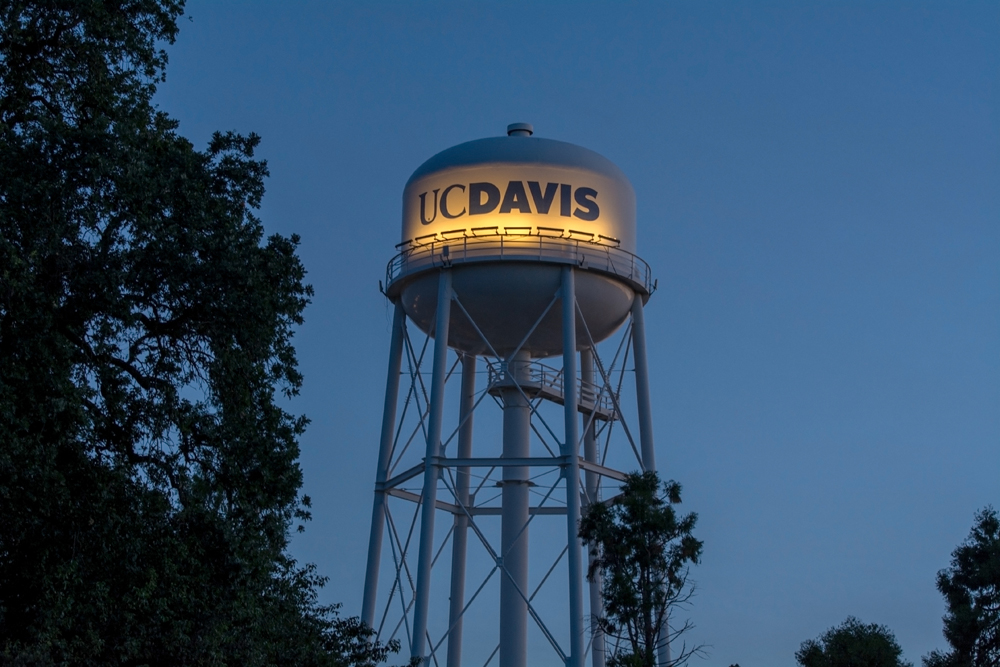
The University of California Davis campus has introduced daily parking rates for its students, employees, and visitors - by replacing its monthly parking permits.
As a way to pursue the university’s objectives of decreasing greenhouse gas emissions by 10% by 2025, the new daily parking rate system was outlined in the campus’ transportation demand management (TDM) strategy to encourage its community to reconsider driving to campus and better utilise the institute’s current facilities and alternative transportation solutions.

With the university’s community growing each year, UC Davis Transportation Services needed to develop a strategy that lowers on-campus parking demand to ultimately minimise the necessity to build more costly parking infrastructure on space that could otherwise be used for more educational facilities and prevent raising parking costs.
Before introducing the daily parking rates, drivers were paying a flat monthly fee for parking permits, regardless of whether they were parking on campus every day or not. This raised the question: ‘Why pay for something that’s not being used to its full capacity?’
On top of this, the pandemic created several problems for Transportation Services because, as an auxiliary unit on campus, the department does not receive any external funding for maintaining the campus’ transportation infrastructure and relies solely on creating its own revenue – which is generated through parking fees.
In the fall of 2019, 95% of on-campus parking spaces were being regularly used; this dropped to a 20% capacity in the fall of 2020. For this reason, the department has faced a massive drop in its operating budget of approximately $8 million in the last 12 months.
Active travel choices
Despite this loss in revenue, Transportation Services has shown that the pandemic has a silver lining by being able to continue operationalising its TDM strategies thanks to the smaller population on campus making this process more manageable. One of these strategies was the introduction of daily parking rates. Drivers are now provided with the flexibility to pay for parking when they actually park on campus - not for the days they don’t.
Moreover, drivers must now routinely choose to pay every day, which ultimately leads them to be more cognisant of their daily expenditure. This presents a significant advantage over monthly parking permits where drivers would habitually pay for the entire month, with staff even having the cost deducted from their payroll, removing any necessity to reconsider their commute choices and the impact their choices are having on the environment. In a statement, Perry Eggleston DPA CAPP, executive transportation director at UC Davis, said: “The problem Transportation Services at UC Davis found with monthly rates was that if you’d already paid for parking and you’re sitting at home thinking ‘do I really want to walk, bike, or bus today?’ the most common response is ‘well I’ve already paid for parking so I might as well drive’. We’ve inverted the paradigm by putting parking as the last choice. So now if you choose to use alternative means such as transit systems or biking, there is an intrinsic benefit to the choice because you don’t pay for parking.”
To avoid any potential grievances that typically accompany institutional parking price modifications, UC Davis Transportation Services created a formula by taking the monthly cost of all three levels of the university’s parking permits and multiplying each by 12, and dividing the sum by the total number of working days in the fiscal year. The new daily parking rates demonstrate to drivers how much money they can save each year with the new system, assuming that the average driver does not park every day of the fiscal year.
For the university, incentivising drivers to reduce the number of days they park on campus encourages them to consider alternative means of getting to the university. The university already has almost 40% of its students commute to the campus by bike and has many other flourishing commuting solutions. As a result of more of its community using these alternative solutions, the university strides towards its environmental objectives while on-campus parking demand decreases.
Post-Covid commuting patterns
As the world keenly awaits the unravelling of a post-pandemic society, industries across the globe are anticipating what the shape of communities might look like. For transportation and mobility experts, one particular area of interest has concerned the shift in commuting habits.

Whether the majority of people continue to work from home or make a complete return to the office or classroom is uncertain, but many experts believe the most likely solution to ensure a safe and efficient reopening of society is the combination of the two through a so-called hybrid model. This describes a flexible working schedule that combines in-person presence with telecommuting as a way to circumvent overcrowded locations on certain days of the week to prioritise people’s safety. This form of flexible working schedule requires an equally flexible solution for those that, by necessity, commute to the university by car.
By giving this group access to daily parking rates, they simply pay when they need access to park their vehicles. In addition to supporting such a hybrid work model, the daily parking rate system can also help with the organisation of large-scale, on-campus events where parking demand is elevated. The flexibility provided by this model means that institutions can use the pricing structure to meet the required parking demand. That is, by using the p ricing accordingly, the institution can increase or decrease the cost of parking to distribute the parking demand around campus.
This can also apply to an institution’s daily operations, where an empty parking space in a daily rate system is unprofitable (in a monthly permit system parking would be paid for even if the lot was empty). Considering this, transport departments are able to daily fluctuate the cost of a parking space to increase or decrease parking demand, depending on the circumstances.
Transport demand management
The case put forward by the University of California Davis provides a curious overview of what the near-future holds in terms of institutional parking management. The university was once again recognised as one of the Best Workplaces for Commuters this year for meeting the National Standard of Excellence for its commuter benefits, thanks to the innovative solutions that the institution’s mobility experts have established to steer the campus’ transport programme and its objectives in the right direction.
As well as introducing daily parking rates, the university has partnered with ParkMobile software to digitise its parking payment system and even implemented licence plate recognition technology that transmits vehicle information directly into the ParkMobile’s management system to streamline the entire parking process.
Furthermore, the case highlights the intriguing potential of pricing strategies when integrated with transportation demand management that, together, could offer an essential component to resolve institutional challenges that stretch beyond parking facilities. For this to work, institutions and organisations must work hand-in-hand with transportation departments to coordinate a safe and efficient return to class or work.
Even beyond university parking strategies, daily parking rates could become part of a wider range of transport demand management strategies in the post-pandemic world to accommodate more flexible work scheduling models.
ABOUT THE AUTHOR
Scott Frankland is head of content at Sengerio
This is an edited version of a blog which can be found here











